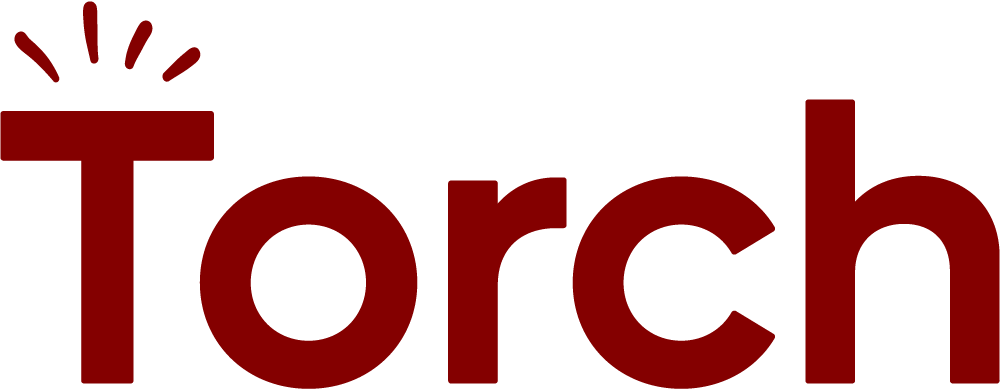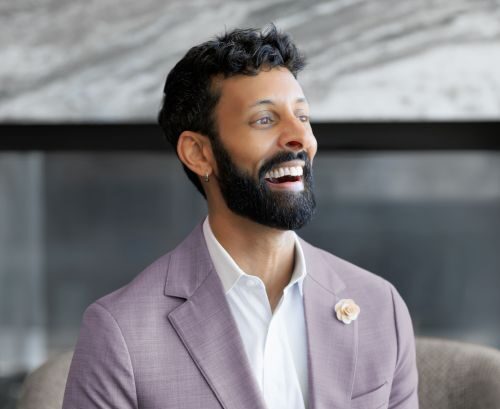What if resilience isn’t something you carry but something you build into your team? “Be more resilient” used to sound like support. Now it can feel like pressure, especially when every few weeks something shifts and leaders are left to deal with the fallout.
In our latest Fireside Chat, Dr. Vijay Pendakur (author of The Alchemy of Talent) and Torch’s Kathryn Coyle unpacked what it means to lead through that pressure.
Vijay shared stories from higher ed, healthcare, and public service. Moments when rituals and resets helped shift team dynamics. Kathryn layered in what she sees every day as a leadership coach. The invisible habits, systems, and expectations that either support leaders or wear them down.
You’re not failing. The system is cracking. And here’s how we start to rebuild it. With rituals, with capacity, and with each other. If you’re shouldering too much while the ground keeps shifting, this conversation will hit home. Check out the recording.
The pace problem
Markets shift, tech moves fast, there are reorgs overnight. Vijay’s surfboard metaphor re‑centers the goal. Stop waiting for calm water and train your team to balance on moving waves.
“Leading and teaming in 2025 is about learning to surf, not building one more bridge. The waves are gonna keep coming, and we actually have to redevelop a set of skills that allow us to stay on top of the wave.” — Dr. Vijay Pendakur
Start with small shifts:
- Choose weekly “watch-captains” to scan for new market or policy trends and share a quick readout.
- Begin planning meetings with a “wave map” to name recent disruptions.
- Build team-wide capacity for decision-making and sensemaking with contextual coaching.
Kathryn sees it all the time in her coaching work—leaders trying to shoulder too much, even when the ground is shifting beneath them.
“Through my work as a coach, even the most seasoned leaders still fall into the trap of trying to hold too much. There’s too many changes on their plate to think in that linear, bridge-like fashion.” — Kathryn Coyle
Nobody panics over storms they expect. When volatility is a shared load, leaders get the space to lead again.
Burnout means the system’s breaking
“By the time people are burning out, the system has already produced some pretty big collateral damage. Teams that move from bridge-building to surfing have routines that re-establish role clarity on a regular basis” — Dr. Vijay Pendakur
Pushing harder doesn’t fix exhaustion. Vijay calls for “resilience hygiene”—simple routines that keep burnout from building up:
- Monthly role reset – Ten-minute RACI check to clear duplication and confusion.
- Quarterly effort vs. impact review – Drop one high-effort, low-impact project and give your team back time.
- Track energy early – Monitor meeting load and check-in frequency before it turns into churn.
These patterns show up in teams where leadership is still framed as a solo act. Kathryn flagged how often incentives reinforce that mindset—even when the work demands a team response.
“We coach the individual inside the organization—and that means there’s great benefit, but also challenge. Especially when performance reviews and incentives still center on the individual.” — Kathryn Coyle
That’s the work we focus on at Torch—helping leaders build the leadership capacities that drive lasting change. That includes shifting from overholding to shared ownership, and developing the routines that keep burnout from creeping in.
Rebuilding trust starts with a story
Vijay described what it looked like to lead through that silence—and out of it. He shared his own missteps first, then made space for others to do the same. These two small rituals became the scaffolding for deeper trust and stronger performance.
“Trust, belonging, and connection…were all at zero. I initiated Five Minutes of Fame and Fantastic Fudge‑Ups—rituals that turned recognition and safe failure into weekly habits.” — Dr. Vijay Pendakur
- Five Minutes of Fame: A quick weekly ritual to spotlight quiet wins and consistent effort. Builds momentum through recognition.
- Fantastic Fudge-Ups: A quick weekly ritual to name recent mistakes and share what we learned. Builds trust through honesty and reflection.
They also marked a bigger shift in how he saw his role. He shared an example of a time that he got out of that hub-and-spoke trap where everything is on the leader. That mindset shift—away from being the center of everything—cleared space for real leadership to emerge across the team.
“You’re already shifting how you view yourself as a leader—moving from the center of the wheel to becoming more of a weaver, creating an interconnected web. Leading the team as a unit, not just managing a set of individuals.” — Kathryn Coyle
That shift—from hub-and-spoke control to shared connection—is exactly the kind of change our leadership coaching is built to support. It’s not just about individual growth. It’s about redesigning how teams move, decide, and trust together.
Staying connected, even when apart
“When you’re not hip‑to‑hip, you have to build intentional investment in gathering data that allows you to lead for connection… I use a ritual called Wired, Tired, and Inspired — Dr. Vijay Pendakur
Remote teams lose the hallway moments that used to build rapport. Kathryn and Vijay shared a few ways to bring connection back:
- Wired, Tired, Inspired – 60‑second round‑robin where each person names what’s fueling, draining, and motivating them.
- Follow‑up with care – DM a teammate about their “Tired” within 24 hours. That small nudge builds more trust than another team-wide slide deck ever could
- Remote Recognition Loops – Rotate Five Minutes of Fame across time zones so applause doesn’t stay at HQ.
These moves are part of how we’re reimagining team coaching at Torch—so distributed teams operate like they share one long desk. It frees leaders from being the only glue. Because strong teams make strong leaders. (More to come soon.)
“It’s really about working together. Everybody is involved in participating in the evolution of the team.”— Kathryn Coyle
Try this with your team this week
These are five quick, practical moves to help you lead differently this week. Try one of these small shifts to start moving the load from solo effort to shared leadership—drawn straight from the conversation:
- Map the waves – Start your next planning session with a 5-minute scan. What’s shifting, what’s incoming, and what’s unknown? [builds foresight]
- RACI reset Monday – Spend ten minutes clarifying roles across your team. Who owns what? Where is there overlap or confusion? [reduces friction]
- Sunset one task Friday – Ask your team, what’s one task or meeting we can pause to make space for deeper work? [boosts team capacity]
- Five Minutes of Fame – Choose one moment in the week to publicly recognize a teammate’s effort—especially a quiet win. [builds trust]
- Wired, Tired, Inspired – Use this 60-second check-in at the start of your next meeting to gauge energy and keep connection genuine. [increases emotional visibility]
- Battery Check-In – Ask your team to rate their energy that week—from 0% to 100%. Use it as a conversation starter to surface unseen friction and design better support. [informs smarter support]
Your questions, answered
In hybrid settings, how do we build real connection?
“You actually have to build intentional investment in gathering data that allows you to lead for connection… I use Wired, Tired, and Inspired.”
Is burnout a leading or lagging signal?
“Burnout is a lagging indicator…we’ve got to get better at listening early so we’re not waiting until someone’s at a breaking point to make a change.”
How do you stay grounded under pressure—especially in high-stakes environments?
“You don’t have to be the hero with all the answers. When trust, connection, and belonging run deep, pressure becomes a shared challenge—not something you carry alone. That’s what keeps you grounded.”
Where does emotional intelligence fit into leader resilience?
“Resilience is an outcome. Emotional intelligence is one important ingredient that lays the groundwork by helping leaders stay self-aware, read the room, and lead with connection instead of just control.”
How can creativity and design thinking support team resilience?
“Design thinking starts with empathy. When leaders stay curious about what’s draining their team—and why—they can design smarter systems that reduce friction and help people thrive.”
You don’t have to carry it all
The path to more resilient leadership isn’t about more effort. It’s about smarter design, shared capacity, and support you can trust. Ready to lead differently? Let’s talk.
Speaker spotlights
The Alchemy of Talent: Disruption-proof teams
We’ve teamed up with Dr. Vijay Pendakur to bring his research-backed tools into our coaching experience. It’s a shared mission, to help leaders navigate complexity, build real trust, and lead teams that thrive under pressure.



